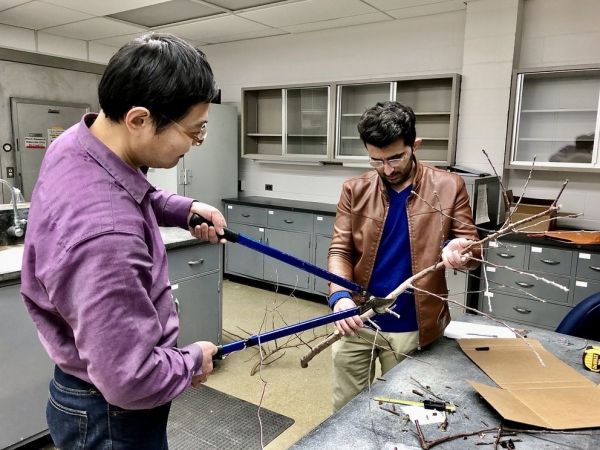The first robotic cutting mechanism — or “end-effector” — for a fully automated, computerized pruning system for modern apple orchards has been designed by a Penn State research team, an early step in the creation of a technology aimed at easing challenges facing tree-fruit growers.
The research is important because the pruning of apple trees comprises about 20% of total pre-harvest production costs, and the tree-fruit industry is struggling with increasing labor costs and a limited labor pool. Automated or mechanical pruning could largely solve those problems, according to researcher Long He, assistant professor of agricultural and biological engineering in the College of Agricultural Sciences.
In the United States, the tree-fruit industry contributes one-fourth, or $18 billion, of all specialty crop production, and apples are one of the most valuable. Pruning is a necessary cultivation technique that affects fruit quality, quantity and the efficacy of pest control, and it is still largely dependent on manual labor, He noted. Between 30 and 50 working hours of skilled labor is required per acre for manual pruning of apple trees.
Continue reading at Pennsylvania State University
Image via Pennsylvania State University


